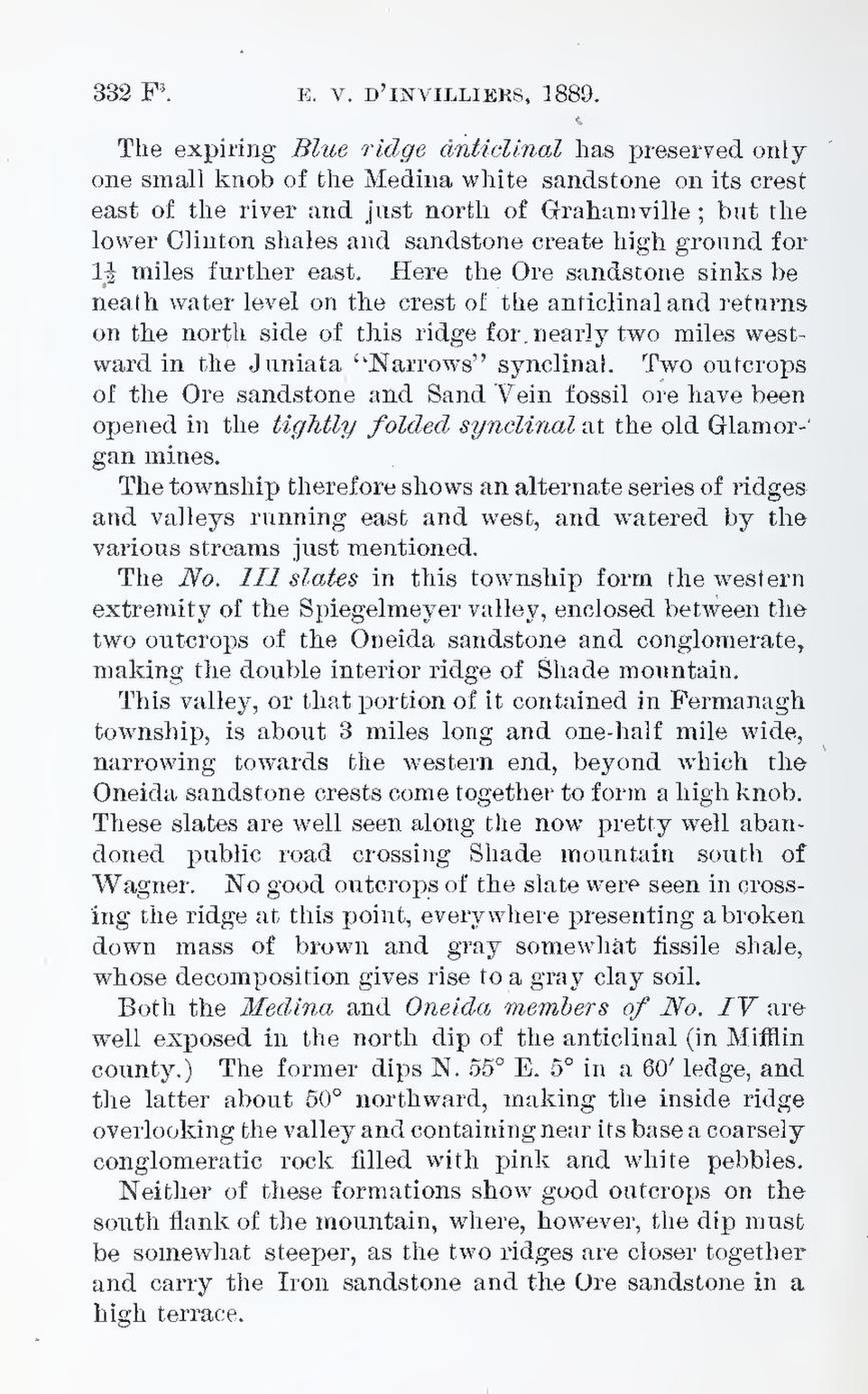The expiring Blue ridge anticlinal has preserved only one small knob of the Medina white sandstone on its crest east of the river and just north of Grahamville; but the lower Clinton shales and sandstone create high ground for 1½ miles further east. Here the Ore sandstone sinks beneath water level on the crest of the anticlinal and returns on the north side of this ridge for nearly two miles westward in the Juniata “Narrows” synclinal. Two outcrops of the Ore sandstone and Sand Vein fossil ore have been opened in the tightly folded synclinal at the old Glamorgan mines.
The township therefore shows an alternate series of ridges and valleys running east and west, and watered by the various streams just mentioned.
The No. III slates in this township form the western extremity of the Spiegelmeyer valley, enclosed between the two outcrops of the Oneida sandstone and conglomerate, making the double interior ridge of Shade mountain.
This valley, or that portion of it contained in Fermanagh township, is about 3 miles long and one-half mile wide, narrowing towards the western end, beyond which the Oneida sandstone crests come together to form a high knob. These slates are well seen along the now pretty well abandoned public road crossing Shade mountain south of Wagner. No good outcrops of the slate were seen in crossing the ridge at this point, everywhere presenting a broken down mass of brown and gray somewhat fissile shale, whose decomposition gives rise to a gray clay soil.
Both the Medina and Oneida members of No. IV are well exposed in the north dip of the anticlinal (in Mifflin county.) The former dips N. 55° E. 5° in a 60′ ledge, and the latter about 50° northward, making the inside ridge overlooking the valley and containing near its base a coarsely conglomeratic rock filled with pink and white pebbles.
Neither of these formations show good outcrops on the south flank of the mountain, where, however, the dip must be somewhat steeper, as the two ridges are closer together and carry the Iron sandstone and the Ore sandstone in a high terrace.
